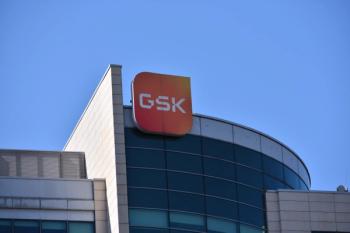
- BioPharm International-01-01-2008
- Volume 21
- Issue 1
Look Beyond Biopharmaceutical Industry Hype
A CMO faces significant risk of lost revenues and profits if the product fails in clinical trials or doesn't meet sales projections.
The decision by Pfizer to stop selling Exubera, its inhaled insulin product, made waves in the pharmaceutical industry primarily because it is so unusual for a major pharmaceutical company to admit defeat. In Exubera's case, however, there seemed to be little other choice. The market had spoken very clearly: physicians didn't like the product and neither did patients, put off by concerns about potential side effects (slight reduction in lung function) and the bulkiness of the delivery device.
The market's rejection of Exubera didn't stop rampant speculation about successors to Exubera, however. The industry press paid much attention to the prospects for the inhaled insulin product being developed by the partnership of Eli Lilly and Company and Alkermes, which combines Lilly's long expertise and leading market position in insulin with Alkermes pulmonary delivery know-how. That product is scheduled for regulatory submission in 2009.
Jim Miller
There was also great speculation surrounding Mannkind Corporation and its Technosphere inhaled insulin candidate, currently in Phase 3. Mannkind is currently going it alone, and filed with the Securities and Exchange Commission in November to raise up to $500 million in a public offering to fund the development of Technosphere. The speculation at the time of the Exubera announcement centered on which major pharmaceutical companies might partner with Mannkind, which is viewed as a necessary step given the development expense, manufacturing investment, and sales and marketing build-up necessary to launch the product. The industry buzz suggested that there would be a lot of competition to partner on Technosphere, which has reportedly achieved good clinical results thus far.
What seemed to be lacking in the coverage of Exubera's withdrawal was an examination of what the market was telling the industry: was the problem related to Exubera being the first generation of a novel concept and Pfizer's clumsiness in launching it? Or was it because inhaled insulin is a solution looking for a problem?
There is good reason to examine the latter hypothesis more closely. After all, the biopharmaceutical industry by its nature tends to be driven more by what science and technology make possible, more than market considerations. This is especially so in the current environment, where truly novel drugs are proving increasingly difficult to bring to market and new delivery mechanisms are looked upon as a possible source of salvation. Yet, in the insulin market, competition between Lilly and Novo Nordisk has already led to major innovations that simplify patient compliance, including pen injector devices with small needles and implanted insulin pumps. Further, as the incidence of diabetes spreads and insurers face the costs of covering more patients, it could be tough for higher price therapies to get reimbursed unless they have substantially better patient compliance and efficacy.
What does all this have to do with outsourcing? Plenty. Contract manufacturers in particular take on big risks when they contract to provide commercial supply of active ingredients (APIs) or drug product for a drug candidate that is in Phase 2 or Phase 3. The agreement requires them to reserve capacity two to five years into the future and maybe even to invest in new manufacturing capacity to meet projected demand. Take-or-pay provisions may limit some of the downside if the product fails in clinical trials or doesn't meet sales projections, but the contract manufacturing organization (CMO) still faces significant risk of lost revenues and profits.
In such a risky environment, exhaustive due diligence on the client's prospects for clinical and commercial success would seem to be called for, but the hype surrounding a new drug candidate can make that difficult, especially in the biopharmaceutical world. The biopharmaceutical industry's focus on technology and deal-making can envelope a new candidate and obscure or overwhelm the scientific and market realities that it faces. A candidate can be considered a sure thing while still in clinical trials and facing multiple competitors already on the market. In the case of Exubera, component suppliers Bespak and West Pharmaceutical Services appeared blind-sided by the Pfizer's decision to pull the product, even though there was plenty of evidence that the market was not accepting it.
Another case in point occurred this past November, when the European Medicines Agency's Committee for Medicinal Products for Human Use (CHMP) issued a negative opinion on UCB's Cimzia as a treatment for Crohn's disease. The CHMP's opinion, which UCB plans to appeal, cited issues relating to clinical efficacy, risk of bleeding, and quality control in manufacture of the active ingredient. Crohn's is one of only several indications for which UCB is targeting Cimzia, with rheumatoid arthritis being the biggest opportunity. While the clinical efficacy issues are specific to Crohn's, the bleeding and quality control issues could have broader implications for other indications.
The CHMP's opinion could have a big impact on Lonza, which signed a six-year agreement with UCB in 2005 to supply the API for Cimzia, a PEGylated antibody fragment. Under the agreement, Lonza is to dedicate to UCB half of the capacity of two 15,000-L microbial fermentation bioreactors it has built at its site in Visp, Switzerland, at a cost of $165 million. Lonza is one of the industry's savviest players and its contract probably has provisions that will protect at least some of its downside risk. However, the uncertainty factor will probably weigh on the company for some time and make it difficult to arrange for alternate uses of the capacity. (Lonza has not issued a statement on the Cimzia situation yet.)
The Committee for Medicinal Products for Human Use's decision shocked UCB and the biopharmaceutical industry, which has viewed Cimzia's approval and market success as an almost foregone conclusion for several years. Not only did that perception jump the gun on regulatory approval, it also overlooked the fact that Cimzia would be a late arrival in the anti-TNF market, where existing candidates including Amgen's Enbrel, J&J's Remicade, and Abbott's Humira are duking it out and expanding their indications across the autoimmune disease spectrum.
The reality of the contract manufacturing business model is that it shares a major characteristic of the proprietary product model: CMOs must constantly renew their product portfolio, replacing late lifecycle products whose sales are declining with new products that can be expected to grow. The odds are against the success of those new products, however, most of which are signed up when they are still in clinical trials and have yet to gain regulatory approval, let alone commercial sales. In an increasingly hostile regulatory and commercial environment, the continued success of contract manufacturing organizations will require that they look beyond the biopharmaceutical industry hype and take careful measure of their clients' prospects for success.
Jim Miller is president of PharmSource Information Services Inc. , Springfield, VA, 703.383.4903,
Articles in this issue
almost 18 years ago
Rapid Development and Optimization of Cell Culture Mediaalmost 18 years ago
Biotech Manufacturers Face a Challenging 2008almost 18 years ago
How to Avoid Becoming a Biotech Zombie Part 1almost 18 years ago
Preparing for Your First IND Submission: The Devil is in the Detailsalmost 18 years ago
It's the Intangibles that Matteralmost 18 years ago
Satisfied, Well Paid, and Securealmost 18 years ago
Evaluating China's Intellectual Property Situationalmost 18 years ago
Biopharmaceuticals in India: A New EraNewsletter
Stay at the forefront of biopharmaceutical innovation—subscribe to BioPharm International for expert insights on drug development, manufacturing, compliance, and more.




